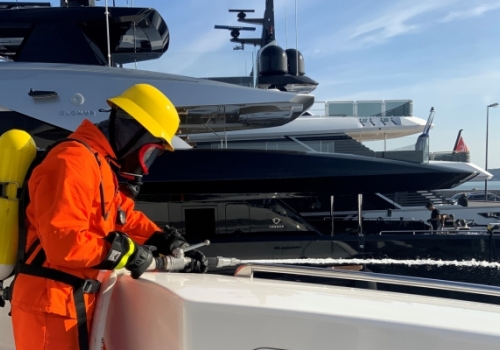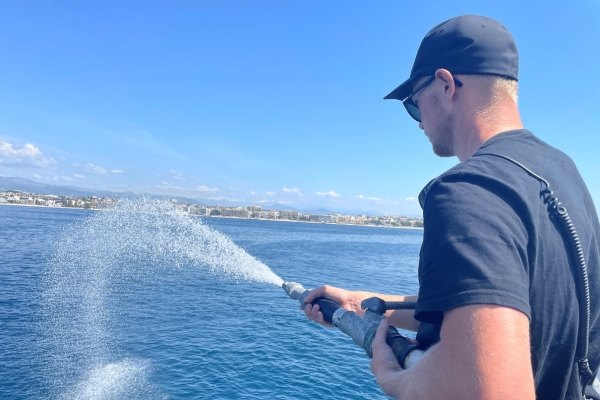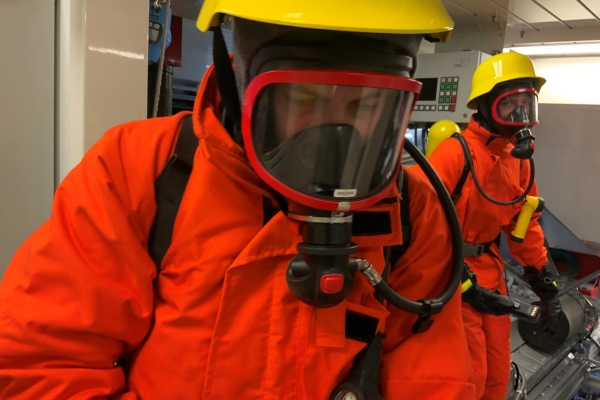A Captain's Defense: Safety Management on Smaller Vessels

I am often asked “Can we put you down as DPA?” by captains filling out flag issued forms. I reply “Yes, if I can participate in the creation, application, development and monitoring of the system.” Often the dialogue ends there, with no more involvement beyond being “put down” deemed necessary by the enquiring party.
When used judiciously, a proper Safety Management System (SMS) is the captain’s best friend. Having one that isn’t followed is an open risk for blame, and not having one at all is an invitation for accusations of gross negligence in the event of an accident.
The blame game, a competition after the event to exclude oneself from any responsibility for a negative outcome, is often won by managers and owners who instinctively point the finger at the captain - he or she is, after all, the one running the boat. External influences and extenuating circumstances are often overlooked, or quickly forgotten.
Suddenly we see owners, managers, flag, the local police, and Port State Control united in blaming the captain.
A “put me down” DPA and an unsophisticated - or non-existent - SMS won’t help in this instance. An accident cannot be undone, but attention quickly turns to corrective action and a constructive way forward when the captain can provide a robust defense of his or her safety management performance. In practice, this means being able to demonstrate the creation, adherence and continuous improvement of the vessel’s SMS.
How can conducting SMS checklists protect the captain from blame?
The International Safety Management Code understands that ships masters do not have all the answers, they are employees and should not be burdened with the consequences of accidents at sea or in port as long as they have been following the orders of The Company, and not broken local or international law, and not acted with gross negligence.
Who is The Company? Regulation one of the ISM Code identifies The Company as “The owner of a ship or any other organisation or person, such as the manager….who has assumed responsibility for the operation of the ship from the owner of the ship and who, by assuming such responsibility, has agreed to take over all the duties and responsibilities imposed by the International Safety Management Code.”
In other words, The Company has agreed to take over all the duties and responsibilities imposed by the ISM code. The company can delegate duties but retains overall responsibility for outcomes.
What does this mean for the captain?
It means that by adhering to the SMS provided by The Company, to the letter, the captain has a leg to stand on if things go wrong. By fulfilling his or her responsibilities defined by The Company, responsibility for inadequacies in the system revert back to The Company.
What if the vessel is private, or too small for the ISM code to apply?
“I didn’t have to have a safety management system” is a weak defense if your diesel spill is making the local news or a crew member is in hospital. The captain is a target on vessels of all sizes and is expected to have more than nothing to offer when things go wrong.
How do I start a safety management system?
Start by reading the ISM code part 6, then have a look at the REG Yacht Code, part A, page 185: “Safety Management of vessels less than 500GT”. Start with procedures for responding to emergency situations, and begin with drills for mustering, firefighting and abandoning ship, which should be practiced monthly.
Keep records, take photos and write reports on these drills. How did the breathing apparatus and fire suit donning time compare to last month? Record the use of the fire pump, and even the bilge pump as a fire pump. What about the emergency fire pump? How long did it take to muster? How many people does it take to lift and move a life raft? Does all the equipment used work properly? What needs to be replaced or improved?
 Once you’re confident with fire and abandon ship, expand your drills to cover other emergencies. Make a calendar timetable and aim for continuous improvement - document everything!
Once you’re confident with fire and abandon ship, expand your drills to cover other emergencies. Make a calendar timetable and aim for continuous improvement - document everything!
Solicit written approval from The Company that what you are doing and aiming for is adequate. Respond to feedback, and timetable implementation of new elements.
Having started on the human element of safety management, expand into machinery, namely critical equipment. ISM Code Part A: “The Company should identify equipment and technical systems the sudden operational failure of which may result in hazardous situations. The safety management system should provide for specific measures aimed at promoting the reliability of such equipment or systems.”
This is a broad definition, so start at the core and move outwards - fire and bilge pumps, fire suppression systems, emergency watertight doors, windlasses, steering systems, engines, generators. Maintain these systems according to the manufacturers’ recommendations. Learn how to operate them, create simple operating manuals or posters, include crew training in inductions and familiarisations for joining crew. Test the equipment regularly and maintain records of the above.
Once the system has been started, there is a platform to expand from, continuing to follow elements of the ISM Code and REG Yacht Code agreed with The Company.
For captains, this is a method for reducing the likelihood of accidents or, in the event of a negative occurrence, remaining on board as part of the solution, deflecting responsibility for failings to the correct place, namely The Company.
For the avoidance of doubt, be aware that full adherence to the vessel’s safety management system is vital if it is to be used as an effective defense for the captain. Neglecting an element even unrelated to an accident will only allow for the use of that damning sentence: “The captain did not adhere to the safety management system that The Company provided.”


Post your comment
You cannot post comments until you have logged in.
Login to post a commentComments
No one has commented on this page yet.
RSS feed for comments on this page | RSS feed for all comments